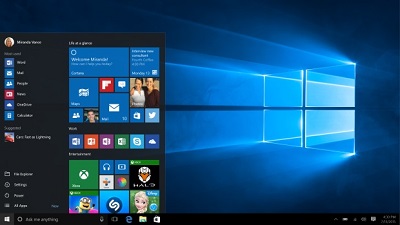The latest version of Microsoft Windows is Windows 10, with Home and Pro versions featuring on Microsoft desktop, laptop and tablet devices. Windows 10 includes all the accessibility features in Windows 7 and the accessibility features in Windows 8.1 but has some helpful new features which include:
- Microsoft Edge web browser: this replaces Internet Explorer and provides a faster, more standards-compliant experience likely to benefit users as assistive technology software is updated to support it.
- Cortana: a digital assistant, similar to the Siri digital assistant on Apple mobile devices, allowing users to verbally communicate with the computer, asking for web-based information and issuing computer commands.
- Narrator: improvements to support the Microsoft Edge web browser.
- Tablet Mode: allowing users to toggle between a Windows 7-like desktop interface and a Windows 8.1-like tablet interface depending on how the device is used.

Is it worth upgrading?
The upgrade is free for most users and while Media Access Australia generally recommends the upgrade due to the accessibility improvements, it is important to consider if the benefits outweigh the potential difficulties.
People with disabilities considering upgrading from Windows 7 will notice the most significant improvements with the Narrator screen reader being improved dramatically and the Magnifier now working effectively with the High Contrast colour themes. The accessibility features have also been optimised for a touch-screen environment so most of the built-in features will work well with either a traditional mouse and keyboard or a touch-screen device such as a tablet.
People with disabilities upgrading from Windows 8.1 will notice less changes, although the general feedback from people with disabilities is that the ability to toggle between a desktop interface and a tablet interface with the ‘tablet mode’ option has significantly improved its ease of use.
However, before upgrading it is important to ensure that any third-party assistive technology software you may be using is compatible with Windows 10. If your software is not compatible, you may have difficulties accessing your computer after the upgrade.
Further information on the accessibility of Windows 10 can be found in the Windows 10 hands-on news item.
Top of page

